Find Help
More Items From Ergsy search
-

What is cervical screening (smear test)?
Relevance: 100%
-

Cervical screening (smear test) – what’s it all about?
Relevance: 98%
-

Booked in for your smear test (cervical screening) and not sure what to expect?
Relevance: 93%
-

Cervical screening: Q&A | NHS
Relevance: 74%
-

The NHS is #StillHereToHelp with cervical screening
Relevance: 69%
-

Cervical screening: what to expect | NHS
Relevance: 69%
-
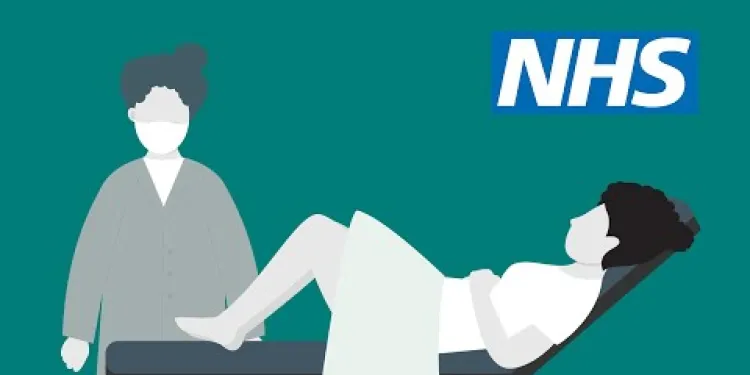
Cervical screening: how it's done | NHS
Relevance: 68%
-

NHSGGC - Cervical Cancer Screening - English
Relevance: 65%
-

Cervical screening for transgender men | NHS
Relevance: 65%
-

Don’t ignore your cervical screening invite | NHS
Relevance: 65%
-

Cervical screening: what to expect | NHS
Relevance: 64%
-

Cervical screening for women who have experienced sexual assault | NHS
Relevance: 58%
-

Is HPV testing available?
Relevance: 51%
-

What is the link between HPV and cervical cancer?
Relevance: 50%
-

Accessing cervical screening with the right support for people with a learning disability
Relevance: 50%
-

Health Screenings You Should Know About
Relevance: 48%
-
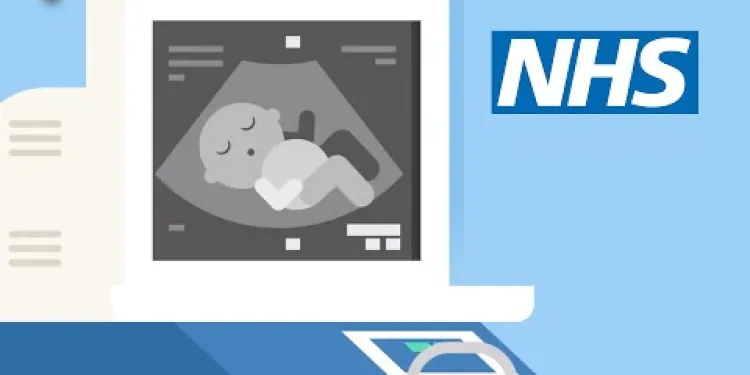
Screening tests for you and your baby | NHS
Relevance: 37%
-

Can the test be performed during my menstrual period?
Relevance: 33%
-

HPV - My Story | NHS
Relevance: 33%
-

How to do the FIT bowel cancer screening test | Cancer Research UK
Relevance: 33%
-

Can HPV lead to cancer?
Relevance: 33%
-

Are there symptoms of an HPV infection?
Relevance: 30%
-

How can HPV be prevented?
Relevance: 29%
-

Can HPV be treated?
Relevance: 28%
-

How is blood screened to prevent disease transmission?
Relevance: 28%
-

Diabetes Eye Screening
Relevance: 27%
-
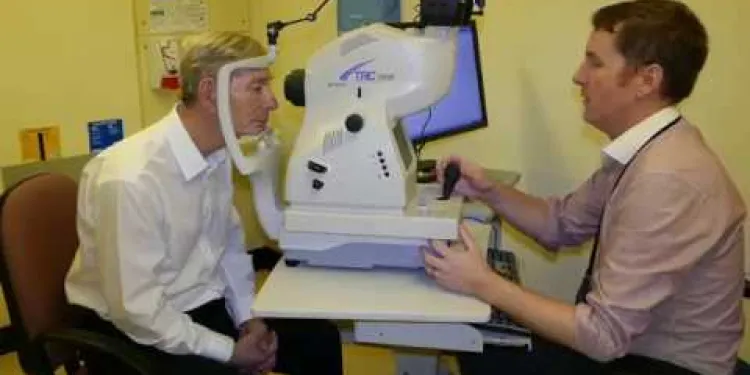
Derbyshire Diabetic Eye Screening - Your Screening Appointment
Relevance: 26%
-

Bowel cancer screening: Alan Titchmarsh and Tommy Walsh | NHS
Relevance: 26%
-
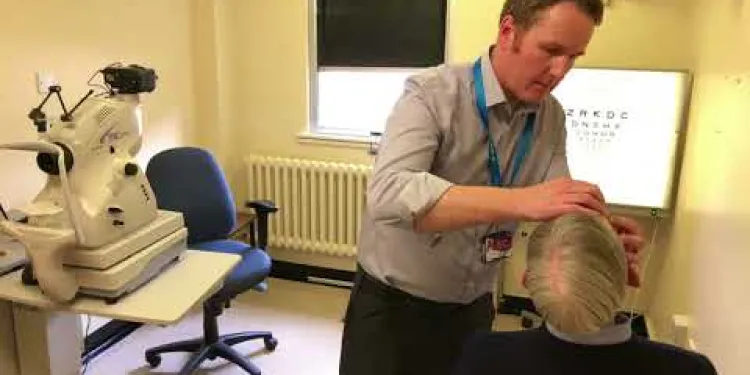
Derbyshire Diabetic Eye Screening - Diabetic Eye Screening
Relevance: 26%
-

What other viruses are tested for in blood donations?
Relevance: 26%
-

What are the advantages of an at-home colorectal cancer test?
Relevance: 25%
-

NHS breast cancer screening
Relevance: 25%
-

Abdominal Aortic Aneurysm (AAA) screening programme
Relevance: 25%
-

How does a fecal occult blood test (FOBT) work?
Relevance: 25%
-

Are there risks associated with home colorectal cancer tests?
Relevance: 25%
-
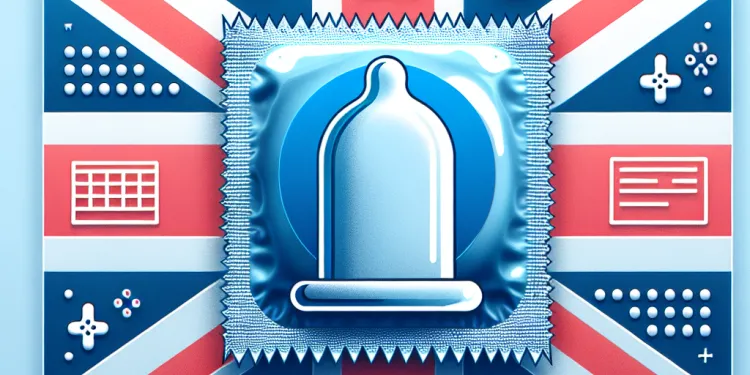
Can using condoms fully protect against HPV?
Relevance: 25%
-

Prostate cancer diagnosis and tests
Relevance: 25%
-

What is the HPV Virus?
Relevance: 25%
-

Can home colorectal cancer tests replace a colonoscopy?
Relevance: 25%
-

Can HPV affect both men and women?
Relevance: 25%
What is Cervical Screening (Smear Test)?
Introduction to Cervical Screening
Cervical screening, commonly referred to as a smear test, is a medical procedure aimed at detecting abnormal cells in the cervix. The primary objective of cervical screening is to identify and treat precancerous changes in the cervix before they have the chance to develop into cervical cancer. This process is crucial in reducing the incidence and mortality rates of cervical cancer among women.
Who Should Have Cervical Screening?
In the United Kingdom, cervical screening is offered to women and people with a cervix aged 25 to 64. The NHS sends invitations every three years to those aged 25 to 49 and every five years to those aged 50 to 64. It is important to attend these appointments, even if no symptoms are present, as regular screening can identify abnormal cells early on.
How is Cervical Screening Done?
During a cervical screening appointment, a small sample of cells is taken from the cervix using a soft brush. The procedure is typically quick, lasting only a few minutes, and while it may cause some discomfort, it should not be painful. The sample is then sent to a lab where it is tested for high-risk types of human papillomavirus (HPV) that can cause cervical cell changes. If HPV is found, the sample is further examined for any abnormal cells.
Understanding the Results
The results of cervical screening can take a few weeks to come back. They usually fall into one of the following categories: normal, inadequate (meaning the sample was not clear enough to give a result), HPV negative, or HPV positive with or without abnormal cells. Depending on the outcome, further testing or a follow-up appointment may be required.
Importance of Regular Screening
Regular cervical screening is vital for early detection and prevention of cervical cancer. It is a preventative measure that saves lives by identifying changes before they become cancerous. It is recommended not to delay or skip screenings, even if previous results have been normal, to ensure continued health and well-being.
What is Cervical Screening (Smear Test)?
Introduction to Cervical Screening
Cervical screening, also called a smear test, is a health checkup. It looks for bad cells in the cervix. The cervix is part of a woman's body. This test helps stop cells from becoming cancer. Screening helps keep women healthy.
Who Should Have Cervical Screening?
In the UK, women and people with a cervix aged 25 to 64 can have cervical screening. The NHS sends letters to remind you. Women aged 25 to 49 get letters every three years. Women aged 50 to 64 get letters every five years. It is important to go even if you feel fine. This test helps find bad cells early.
How is Cervical Screening Done?
During the test, the nurse uses a soft brush to take a small sample of cells from the cervix. This takes only a few minutes. It might feel a bit uncomfortable but should not hurt. The sample goes to a lab to check for HPV. HPV is a virus that can make cells change. If HPV is found, they check the sample more for bad cells.
Understanding the Results
Results can take a few weeks. They can be: normal, not clear (test needs to be done again), HPV negative (no virus), or HPV positive (virus found, with or without bad cells). You might need more tests or another checkup depending on the result.
Importance of Regular Screening
Regular cervical screening is very important. It helps find changes before they turn into cancer. Screening can save lives. Do not delay or skip your tests, even if your last test was normal. This keeps you healthy and safe.
Frequently Asked Questions
What is cervical screening?
Cervical screening, also known as a smear test, is a method of preventing cancer by detecting and treating early abnormalities in the cervix.
Why is cervical screening important?
Cervical screening is important because it helps detect abnormal cells in the cervix that could develop into cervical cancer if left untreated.
Who should have a cervical screening?
In the UK, women and people with a cervix aged 25 to 64 are invited for cervical screening.
How often should I have a cervical screening?
Women aged 25 to 49 are invited for screening every 3 years, and women aged 50 to 64 are invited every 5 years.
What happens during a cervical screening?
During a cervical screening, a small sample of cells is taken from the cervix using a soft brush. The sample is then tested for high-risk human papillomavirus (HPV) which can lead to changes in cervical cells.
Is a cervical screening painful?
A cervical screening may be uncomfortable but should not be painful. If you experience pain, inform the nurse performing the test.
How do I prepare for a cervical screening?
You don't need to do much to prepare, but it's advisable to avoid scheduling the screening during your period and to wear comfortable clothing.
What do I do if I haven’t been invited for a cervical screening?
If you're eligible and haven't received an invitation, contact your GP to schedule a cervical screening appointment.
What should I expect after a cervical screening?
After the screening, you might experience some light bleeding or spotting, which should stop within a few hours. Your results will be sent to you within 2 weeks.
What do the results of a cervical screening mean?
The results will indicate whether your sample is normal, inadequate, or if you have abnormal cells or high-risk HPV. Your healthcare provider will explain the next steps if your results are abnormal.
Can I still have a cervical screening if I’m pregnant?
Yes, but it might be postponed until 12 weeks after giving birth. Speak with your healthcare provider for guidance.
Does a cervical screening test for STIs?
No, a cervical screening is specifically for detecting abnormal cells in the cervix. Separate tests are required for sexually transmitted infections (STIs).
What happens if abnormal cells are found during cervical screening?
If abnormal cells are found, you may need further tests like a colposcopy. If high-risk HPV is also present, you may require treatment to remove the abnormal cells.
Can I opt out of cervical screening?
Yes, you can opt out by informing your GP or practice nurse, but it is strongly recommended to participate in cervical screening when invited.
Is cervical screening available to transgender men?
Yes, cervical screening is available to transgender men and anyone with a cervix, and it is important for your health. Speak with your GP about your individual needs.
What is cervical screening?
Cervical screening is a health test. It checks your cervix. The cervix is inside your body. This test helps find early signs of illness.
You can ask someone to go with you to your appointment. You can talk to your doctor or nurse if you have questions.
Cervical screening is also called a smear test. It helps stop cancer by finding and fixing problems in the cervix early.
Why is it important to have a cervical screening?
Cervical screening helps keep you healthy. It checks for cells in your cervix that might cause cancer.
This is important because it can find problems early, before you feel sick.
If doctors find these cells early, they can help you get treatment so you stay well.
Remember, it's a check-up to keep you safe.
If you have questions, you can ask your doctor or nurse for help. They are there to support you.
Cervical screening is important. It helps find bad cells in the cervix. These bad cells can turn into cancer if we don't take care of them.
Who should get a cervical screening?
People with a cervix should have a cervical screening to help stay healthy.
You might need a test if you are:
- Between 25 and 64 years old.
- Someone who has had some sexual activity.
Ask a doctor or a nurse if you need this test.
You can use a calendar or ask someone you trust to remind you when to have a screening.
In the UK, women and people with a cervix who are between 25 and 64 years old are asked to go for a cervical screening.
How often should I get a cervical screening test?
A cervical screening test helps check if your cervix is healthy. It's important for adult women.
If you are unsure when to get the test, ask your doctor or nurse.
Tools that can help:
- Calendar: Mark the date of your test on a calendar.
- Reminders: Set reminders on your phone to remember your appointments.
- Talk to someone: Speak with a doctor or nurse if you have any questions.
Women who are 25 to 49 years old are asked to have a health check every 3 years. Women who are 50 to 64 years old are asked to have a health check every 5 years.
Helpful tips: Use a calendar to remember when your health check is due. You can also ask someone to remind you.
What happens during a cervical screening?
A cervical screening is a health check for women.
Here is what happens:
- You will go to the doctor or nurse.
- You may put on a special gown.
- You will lie down on a bed.
- The doctor or nurse will gently look inside you.
This check helps to keep you healthy.
It's okay to ask questions if you are unsure.
You can bring someone you trust with you for support.
When you have a cervical screening, the doctor uses a soft brush to take a few tiny cells from your cervix. The cervix is a part of your body inside you. Then, these cells are tested to see if there is a virus called HPV. Some kinds of HPV can make the cells change, which is not good for your health.
Helpful Tips:
- Ask your doctor to explain anything you don’t understand.
- It’s okay to bring a friend or family member with you to the appointment for support.
- Remember, this test helps keep you healthy!
Does a cervical screening hurt?
A cervical screening, also called a smear test, checks if your cervix is healthy. Most people say it does not hurt, but you might feel a bit uncomfortable. It only takes a few minutes.
If you feel worried, you can try these things:
- Take deep breaths to relax.
- Talk to the nurse if you are nervous.
- Bring a friend with you for support.
Remember, it is important to get the test to stay healthy.
Getting a cervical screening test might feel a bit uncomfortable, but it should not hurt. If it does hurt, tell the nurse who is doing the test.
How do I get ready for a cervical screening?
A cervical screening is a test to check the health of your cervix. The cervix is a part of your body inside you. Here's how you can get ready:
1. Pick a Day: Try to choose a day when you are not on your period.
2. Wear Comfortable Clothes: You can wear a skirt or loose pants. This makes it easier during the test.
3. Ask Questions: It’s okay to ask the nurse any questions you have. They are there to help you.
If you feel scared, tell someone you trust. They can come with you for support. Remember, the test is really quick and helps you stay healthy.
You don't need to do a lot to get ready. But it's a good idea to not plan the check-up during your period. Wear clothes that feel comfy.
What should I do if I didn't get a letter for a cervical screening test?
If you can get a cervical screening and have not been invited, call your doctor to make an appointment.
What happens after a cervical screening?
After your cervical screening, here are some things to know:
- You might feel a little sore or have some light bleeding. This is normal and should go away soon.
- You will get a letter with your results. It might take a few weeks to receive it.
- If your test shows anything unusual, you might need more tests. This is to make sure everything is okay.
- If you feel worried, talk to your doctor or nurse. They can help answer your questions.
Here are some helpful tools and tips:
- Use a calendar to keep track of when your results are due.
- Ask a friend or family member to support you if you feel worried.
- Write down any questions you have and bring them to your doctor.
After the test, you might have a little bit of bleeding. This should stop in a few hours. You will get your results in 2 weeks.
What do the results of a cervical screening mean?
Cervical screening is a test to check if your cervix is healthy. Your cervix is the lower part of your womb.
When you get your results, they will tell you if everything is okay or if you need more tests.
Here is what your results might say:
- Normal: This means your cervix is healthy. You don’t need any more tests until your next screening.
- Changes found: This means there are some changes in your cervix. You might need more tests to see what’s happening.
- HPV found: HPV is a virus. If it is found, you might need more tests because HPV can cause changes in your cervix.
If you find this test hard to understand, you can:
- Ask your doctor or nurse to explain it again.
- Bring a friend or family member to your appointment for support.
- Use pictures and diagrams to help you understand.
The test results will show if your sample is normal, not enough, or if there are abnormal cells or high-risk HPV. If your results are not normal, your doctor will tell you what to do next.
Can I have a cervical screening while I’m pregnant?
Yes, you can have a cervical screening while you are pregnant. But it is usually best to wait until you are 12 weeks after your baby is born. Talk to your doctor or nurse for advice.
If you need help understanding, you can:
- Ask someone you trust to help explain.
- Use pictures and simple words to understand better.
- Write down questions to ask your doctor or nurse.
Yes, you can, but it might be put off until 12 weeks after having the baby. Talk to your doctor or nurse for help.
Does a Cervical Screening Check for Infections?
A cervical screening is a test to keep your cervix healthy.
It does not test for infections you can get from sex (STIs).
If you think you might have an infection, talk to your doctor or nurse for a different test.
A cervical screening is a test to check for bad cells in the cervix. This test does not check for STIs, which are infections you can get from sex. You need different tests to find out if you have an STI.
What if doctors find unusual cells in a cervical test?
If doctors find cells that are not normal, you might need more tests, like a colposcopy. If there is a virus called high-risk HPV, you might need treatment to get rid of the bad cells.
Can I say no to a cervical screening test?
Yes, you can choose to not have the test. It is your choice.
If you need help to decide, you can talk to a doctor or nurse. They can answer your questions.
Friends or family can support you too.
Yes, you can say no to the test. You just need to tell your doctor or nurse. But it is a good idea to get the test when they ask you to come.
Can transgender men have cervical screening?
If you are a transgender man and have a cervix, you can have a cervical screening test. This test checks for changes in your cervix that could lead to cancer.
If you need help or have questions, you can talk to your doctor or nurse. They can tell you more and help you understand what to do.
Using pictures or videos might help you learn more. You can also ask someone you trust to go with you to your appointment.
Yes, if you are a transgender man or have a cervix, you can get checked for cervical health. This check is important to keep you healthy. Talk to your doctor to see what is best for you.
Useful Links
- Ergsy carfully checks the information in the videos we provide here.
- Videos shown by Youtube after a video has completed, have NOT been reviewed by ERGSY.
- To view, click the arrow in centre of video.
- Most of the videos you find here will have subtitles and/or closed captions available.
- You may need to turn these on, and choose your preferred language.
- Go to the video you'd like to watch.
- If closed captions (CC) are available, settings will be visible on the bottom right of the video player.
- To turn on Captions, click settings .
- To turn off Captions, click settings again.
More Items From Ergsy search
-

What is cervical screening (smear test)?
Relevance: 100%
-

Cervical screening (smear test) – what’s it all about?
Relevance: 98%
-

Booked in for your smear test (cervical screening) and not sure what to expect?
Relevance: 93%
-

Cervical screening: Q&A | NHS
Relevance: 74%
-

The NHS is #StillHereToHelp with cervical screening
Relevance: 69%
-

Cervical screening: what to expect | NHS
Relevance: 69%
-

Cervical screening: how it's done | NHS
Relevance: 68%
-

NHSGGC - Cervical Cancer Screening - English
Relevance: 65%
-

Cervical screening for transgender men | NHS
Relevance: 65%
-

Don’t ignore your cervical screening invite | NHS
Relevance: 65%
-

Cervical screening: what to expect | NHS
Relevance: 64%
-

Cervical screening for women who have experienced sexual assault | NHS
Relevance: 58%
-

Is HPV testing available?
Relevance: 51%
-

What is the link between HPV and cervical cancer?
Relevance: 50%
-

Accessing cervical screening with the right support for people with a learning disability
Relevance: 50%
-

Health Screenings You Should Know About
Relevance: 48%
-

Screening tests for you and your baby | NHS
Relevance: 37%
-

Can the test be performed during my menstrual period?
Relevance: 33%
-

HPV - My Story | NHS
Relevance: 33%
-

How to do the FIT bowel cancer screening test | Cancer Research UK
Relevance: 33%
-

Can HPV lead to cancer?
Relevance: 33%
-

Are there symptoms of an HPV infection?
Relevance: 30%
-

How can HPV be prevented?
Relevance: 29%
-

Can HPV be treated?
Relevance: 28%
-

How is blood screened to prevent disease transmission?
Relevance: 28%
-

Diabetes Eye Screening
Relevance: 27%
-

Derbyshire Diabetic Eye Screening - Your Screening Appointment
Relevance: 26%
-

Bowel cancer screening: Alan Titchmarsh and Tommy Walsh | NHS
Relevance: 26%
-

Derbyshire Diabetic Eye Screening - Diabetic Eye Screening
Relevance: 26%
-

What other viruses are tested for in blood donations?
Relevance: 26%
-

What are the advantages of an at-home colorectal cancer test?
Relevance: 25%
-

NHS breast cancer screening
Relevance: 25%
-

Abdominal Aortic Aneurysm (AAA) screening programme
Relevance: 25%
-

How does a fecal occult blood test (FOBT) work?
Relevance: 25%
-

Are there risks associated with home colorectal cancer tests?
Relevance: 25%
-

Can using condoms fully protect against HPV?
Relevance: 25%
-

Prostate cancer diagnosis and tests
Relevance: 25%
-

What is the HPV Virus?
Relevance: 25%
-

Can home colorectal cancer tests replace a colonoscopy?
Relevance: 25%
-

Can HPV affect both men and women?
Relevance: 25%


